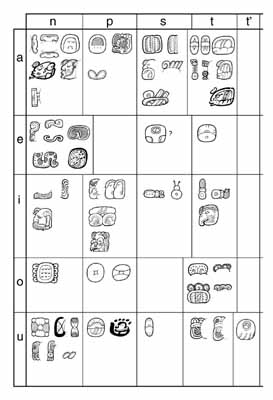

The ancient Maya language created uniquely pictorial forms of hieroglyphic writing ( Stone and Zender, 2011). The Maya civilization is one of the major cultural developments in ancient Mesoamerica. Two example application systems, namely, an automatic glyph retrieval framework and an interactive glyph visualization interface are presented. Our aim is to introduce this descriptor to the wider Digital Humanities (DH) community as a shape analysis tool for DH-related applications. We assess a shape descriptor, within the application domain of Maya hieroglyphic analysis. As one of the key visual cues, shape has been used in various image analysis tasks such as handwritten character recognition ( Fischer et al., 2012 Franken and Gemert, 2013) and sketch analysis ( Eitz et al., 2012). Technological advances in digitization, automatic image analysis, and information management are enabling the possibility to analyze, organize, and visualize large cultural datasets.

The positive evaluation results and feedback further hint the practical value of the HOOSC descriptor. Evaluation results and feedback from both groups show that our tool provides intuitive access to explore and discover the Maya hieroglyphic writing, and could potentially facilitate epigraphy work. To evaluate our tool, we designed evaluation tasks and questionnaires for two separate user groups, namely, a general public user group and an epigrapher scholar group.

The HOOSC descriptor is used to represent glyph shape, based on which pairwise glyph similarity scores are computed. Each node in the graph represents a glyph image the width of an edge indicates the visual similarity between the two according glyphs. Specifically, a force-directed graph prototype is applied to visualize Maya glyphs based on their visual similarity. Additionally, we developed a graph-based glyph visualization interface to facilitate efficient exploration and analysis of hieroglyphs. Different HOOSC parameters are tested in an automatic ancient Maya hieroglyph retrieval system with two different settings, namely, when shape alone is considered and when glyph co-occurrence information is incorporated. We discuss key issues for practitioners and study the effect that certain parameters have on the performance of the descriptor. We introduce the Histogram of Orientation Shape Context (HOOSC) shape descriptor to the Digital Humanities community. Automatic Maya glyph analysis provides an efficient way to assist scholars’ daily work. Maya hieroglyphic analysis requires epigraphers to spend a significant amount of time browsing existing catalogs to identify individual glyphs.


 0 kommentar(er)
0 kommentar(er)
